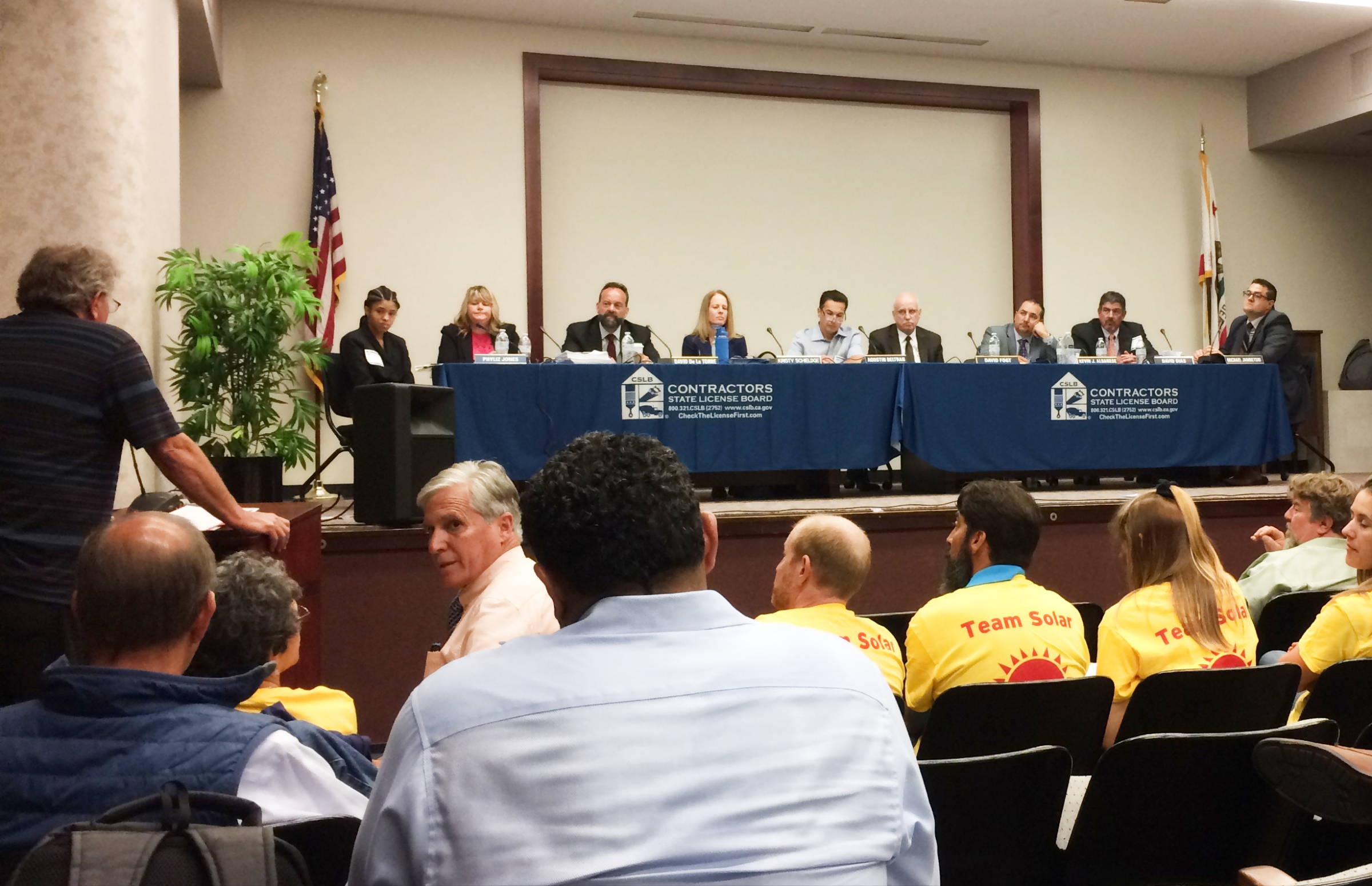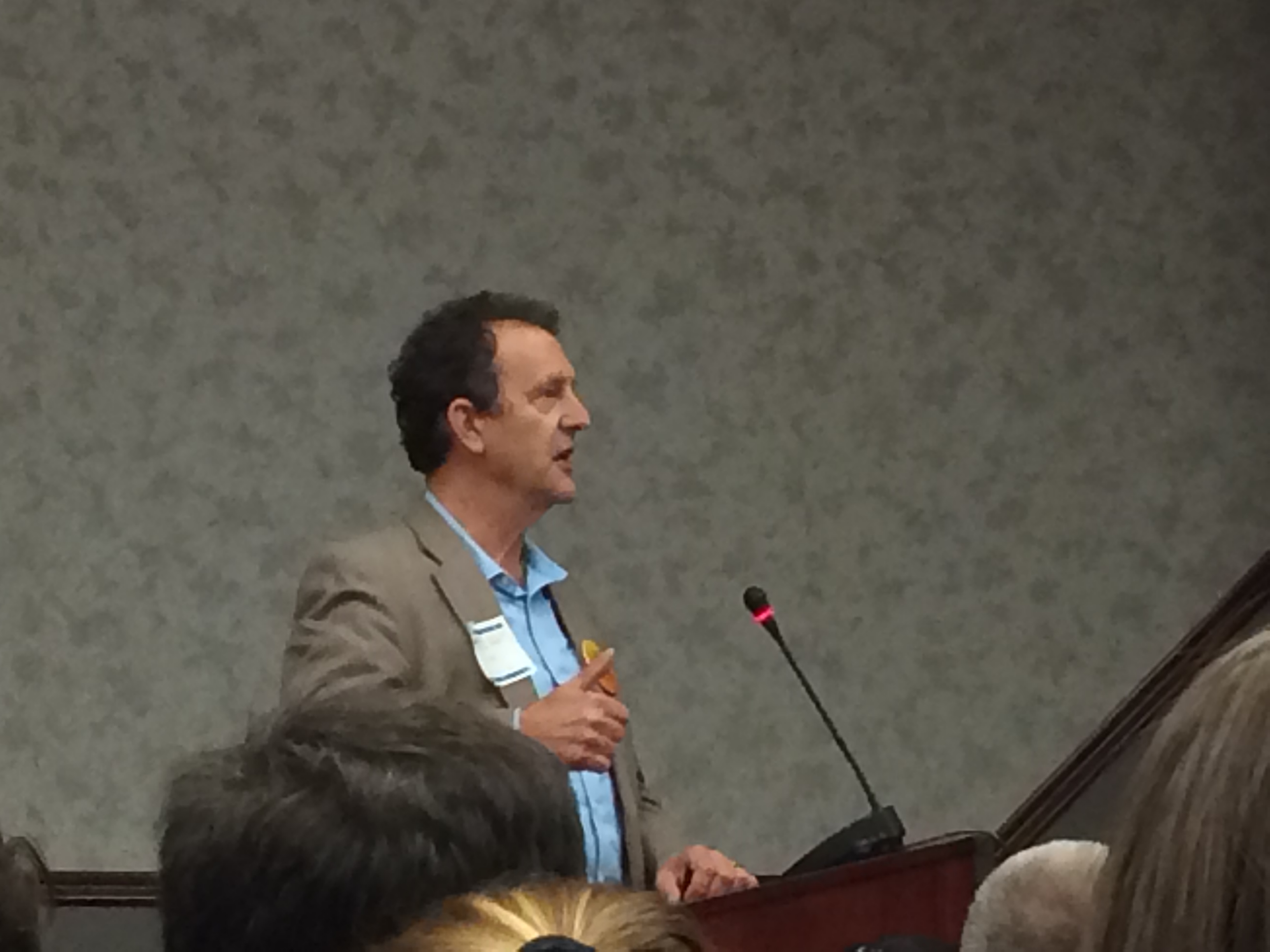
The International Brotherhood of Electrical Workers (IBEW) and the "big three" California utilities continue to collude in an all-out effort to hijack the hard won jobs created by pioneering solar contractors and equipment manufacturers. With the California solar mandate set to affect most new residential construction beginning on Jan 1, 2020, and as solar battery storage is gaining traction in the largest market in the country, the IBEW and the big three utilities are attempting to monopolize the market – threatening the jobs of ~45,000 solar workers.
The California State License Board (CSLB) convened in Sacramento on Aug 6, 2019 to vote on whether C-46 licensed solar contractors could continue to install battery storage with photovoltaic (PV) systems. The IBEW and their allies staged an unfounded and deplorable attack on C-46 competence, training, and safety. Their lobbyists and industry 'experts' delivered a barrage of unsupported claims and half-truths backed by scripted remarks they prepared for a bus load of union workers. The CSLB shamelessly denied CALSSA access to their agenda, publishing their voting options (see below) only seven days before the meeting. Furthermore, the CSLB had insisted no negotiation between themselves and CALSSA could occur without IBEW participation. The CSLB's contemptuous handling of the issue left California PV + storage stakeholders in limbo.
This attack was orchestrated in spite of the CSLB's own regulatory language which has allowed PV + storage installations by C-46s since the 1980s. Furthermore, the National Electric Code (NEC) does not require a C-10 license for these installations, and every installation must pass inspection by the local authority in any event. Nevertheless, the IBEW and the big three utilities insisted that only C-10s paired one-to-one with certified electricians or enrolled apprentices should be allowed to install battery storage systems. This could effectively lock most C-46s out of a market which will increasingly pair PV with battery storage.
CALSSA's Bernadette Del Chiaro implored the board to postpone any decision (Option 4) until solar stakeholders were consulted. However, after more than two years of half-hearted deliberations and feigned outreach, the board came prepared for a summary vote to limit C-46s to small residential battery storage systems tied to PV systems no larger than 10 kW. In a pathetic attempt to conceal their position, the CSLB contrived two "middle ground" options (2 and 3 below) in flagrant disregard of law which prohibits arbitrary legislation. Unsurprisingly, PG&E called for Option 1 which would ban C-46s from installing any batteries outright. CALSSA countered that negotiations must begin at the 1 Megawatt PV threshold, a number 100 times higher than the disastrous figure proposed by the CSLB.
The IBEW and the big three utilities were backed by an incredulous coalition that included; fire firefighters, construction organizations, chief building officials, Sullivan Solar, and the Sierra Club. They all ignored the central fact that California C-46s have been safely and lawfully installing PV systems with storage for decades. Moreover the coalition refused to acknowledge that after nearly one million installations, the solar industry itself is best qualified to address safety issues regarding the equipment they have designed, built, and installed. Instead, lobbyists cited the potential for future battery storage accidents and made unfounded claims such as the nonexistent need for C-10s to perform extensive calculations to insure the safety of the "electrical environment" any time "game changing" batteries were involved. They dismissed UL listings, recent inverter and battery safety improvements, and, the solar industry's excellent safety record, insisting modern equipment was not "plug and play."

Sun Light & Power's Founder and CEO Gary Gerber testified that the days of dangerous solar battery installations were long gone. Gerber explained that all Sun Light & Power installers are carefully trained in-house to safely install storage as opposed to C-10s whose license does not guarantee solar competency. He also welcomed the C-10s and urged the board to help the industry grow rather than limit it. Sun Light & Power employee-owner Seamas Brennan called for both sides to work together in order to meet the greatest challenge of this century and reminded all assembled of the environmental consequences of delays for future generations, citing equivocal statistics of runaway GHG induced climate change.
The proceedings concluded disgracefully, demonstrating the CSLB's apathy for solar jobs, climate change, the law, and their own procedures. After considerable confusion, Chairman Augustin Beltran managed to extract a vote for Option 2 on the condition that CSLB staffers would engage solar stakeholders in another round of discussion regarding PV and storage system sizes before sending their recommendation to the full board for a vote. The CSLB asked few qualifying questions and ignored compelling factual testimony from C-46s and manufacturers. Their vote demonstrated their ignorance of PV + storage systems and their willingness to abuse their powers in order to facilitate the hostile takeover of California's solar industry by the big three utilities and the IBEW.
CALSSA will continue to spearhead the counter attack over the coming weeks and months. Do not miss your opportunity to support the solar industry by coming out in force in Sacramento on Aug 21, 2019 for Solar & Storage Worker Lobby Day. Make sure lawmakers understand what is at stake; solar jobs, and everyone's future.
These are the four options the CSLB presented for vote. (Courtesy of CALSSA)
Option 1: Preclude the C-46 Solar classification from installing battery energy storage systems
Option 2: Permit the C-46 Solar classification to install battery energy storage systems on specified residential units with restrictions
- Limit to a PV system up to 10kW on a single-family dwelling or duplex and BESS must not exceed a 5kW backup/20kWh energy
- BESS is installed at the same time as solar PV system
- No upgrade or alteration is made to the existing electrical system
Option 3: Permit the C-46 Solar classification to install battery energy storage systems on residential units with restrictions
- Limit the BESS installation authority to a PV system on a residential dwelling;
- The BESS is installed at the same time as the solar photovoltaic energy system;
- No upgrade or alteration is made to the existing electrical system of the structure; and,
- With plans drawn or approved by an electrical engineer.
Option 4: Make no change to the existing C-46 Solar classification
Seamas Brennan is a Blog Contributor, Researcher, and Engineering Admin. Assistant at Sun Light & Power